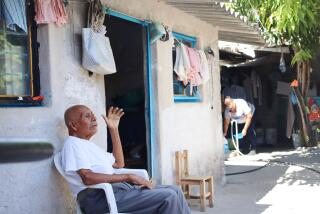High mercury levels in Colombia port raise concern
A scientific study indicating high levels of mercury in Colombia’s largest Pacific port, a possible byproduct of illegal mining, has raised health and safety concerns at a time when the nation is considering green-lighting several major mining projects.
The study of five fish species by National University of Colombia scientists Guillermo Duque and his wife, Pilar Cogua, both based at the university’s Palmira campus, found as much as three times the recommended level of mercury in Buenaventura Bay, where the Dagua River empties into the Pacific Ocean.
Until the government stepped in last summer to stop an illegal gold rush, the Dagua River for two years was the scene of feverish hydraulic mining that ravaged the waterway and caused increased silting of Buenaventura’s bay, which the government is trying to develop as a major harbor to foster trade links to Asia.
Since taking office in August, President Juan Manuel Santos has targeted illegal gold mining operations that have spread across the nation in recent years as the price of the metal has soared. Environment Minister Beatriz Uribe, whose agency has shut down 48 illicit mining operations, has told reporters that “illegal mining is poisoning us.”
Jesus Olivero-Verbel, a toxicology professor at the University of Cartagena, said legal and illegal mining also are a factor in the extensive flooding that has beset Colombia in recent weeks. The silting caused by dredging has reduced the depth of the lower Magdalena River delta, forcing water to spill over riverbanks and marshes.
“So for various reasons, gold mining as currently practiced in Colombia is not sustainable,” Olivero-Verbel said. “There has to be a complete change in mind-set.”
Results of the university’s study were published in local newspapers in November, and the two biologists are preparing an article based on their research for a scientific journal. The authors say more study is needed to confirm the extent of mercury poisoning and its source.
In an interview at the university outside Cali, Duque said the research is a first step in longer-term vigilance needed to monitor mercury levels in a broader cross section of wildlife, shrimp and shellfish.
“This is at very least an early alert because the ecosystem can purify itself,” Duque said. “But it’s very important to mitigate the entry of mercury into the ecosystem to avoid increased levels of the metal in fish.”
Highly toxic mercury is used as an amalgamation agent by many miners, legal and illegal. All too often, illicit miners dump it into streams or rivers, where it becomes a stubbornly toxic agent working its way up the food chain, eventually reaching humans. High levels of mercury have been linked to health problems, including birth defects and neurological disorders such as Minimata disease.
The study drew a cautionary response from the Cauca Valley Regional Corp., a government agency that enforces environmental rules. Spokesman Wilson Garcia said his Cali-based agency had detected mercury in Buenaventura Bay, which it has monitored for 10 years, but that the contamination is at safe levels.
Environmentalists, however, said the study could show the cost that illegal mining is exacting. The study also fuels arguments that the government is in no position to supervise more than 500 legal mining projects that are on the drawing boards and that have received initial permits.
In interviews, Mining and Energy Minister Carlos Rodado bemoaned the high number of mining permits given out by the previous administration under President Alvaro Uribe, and he expressed doubt that his bureaucracy can monitor them unless the government “can achieve more efficiency in regulation.”
Although he is unfamiliar with Colombian mining, David Krabbenhoft, an environmental chemist with the U.S. Geological Survey in Madison, Wis., said in a telephone interview that mercury contamination has been recorded in several parts of the world where illegal gold mining is rampant, including Brazil.
Kraul is a special correspondent.
More to Read
Start your day right
Sign up for Essential California for news, features and recommendations from the L.A. Times and beyond in your inbox six days a week.
You may occasionally receive promotional content from the Los Angeles Times.






